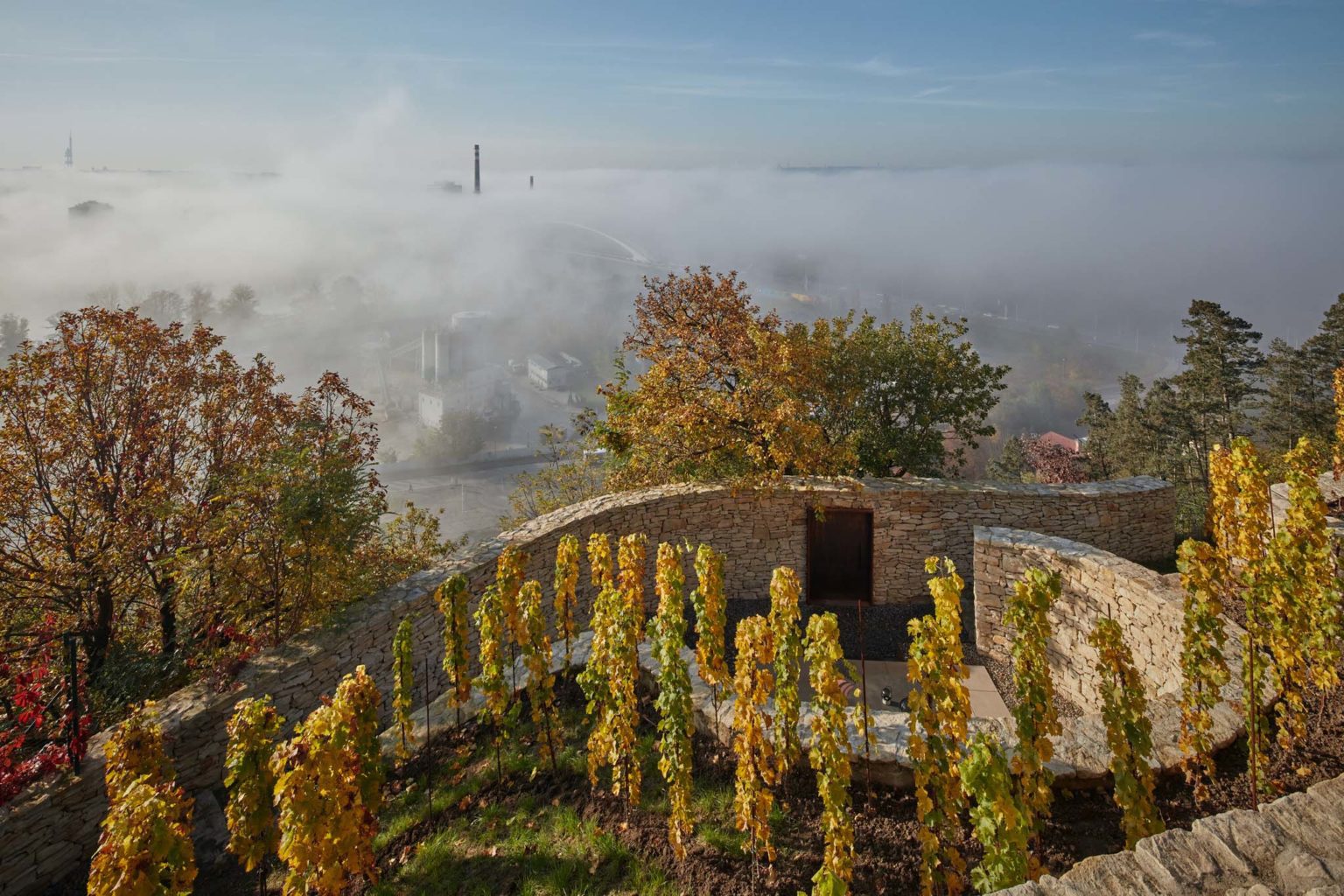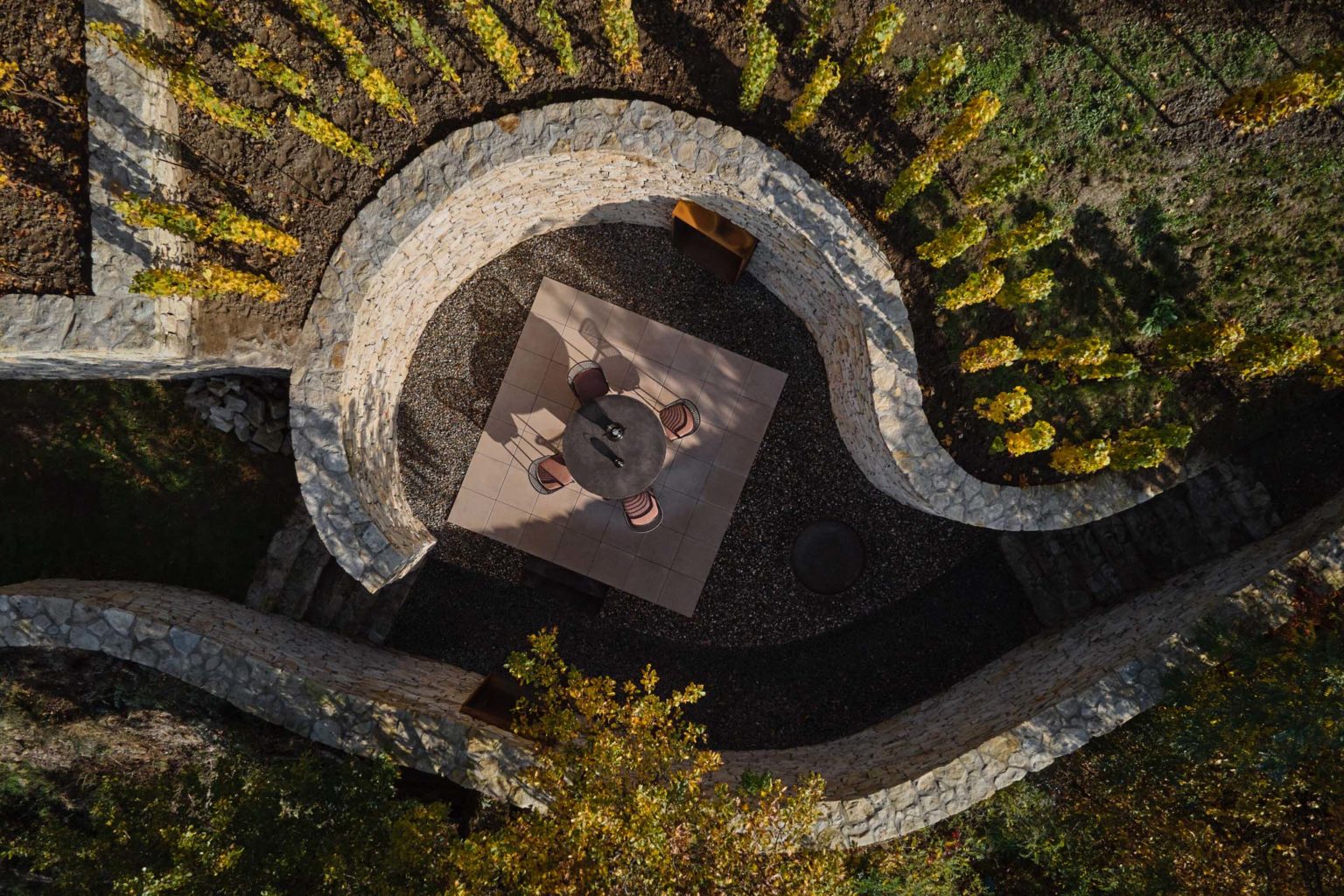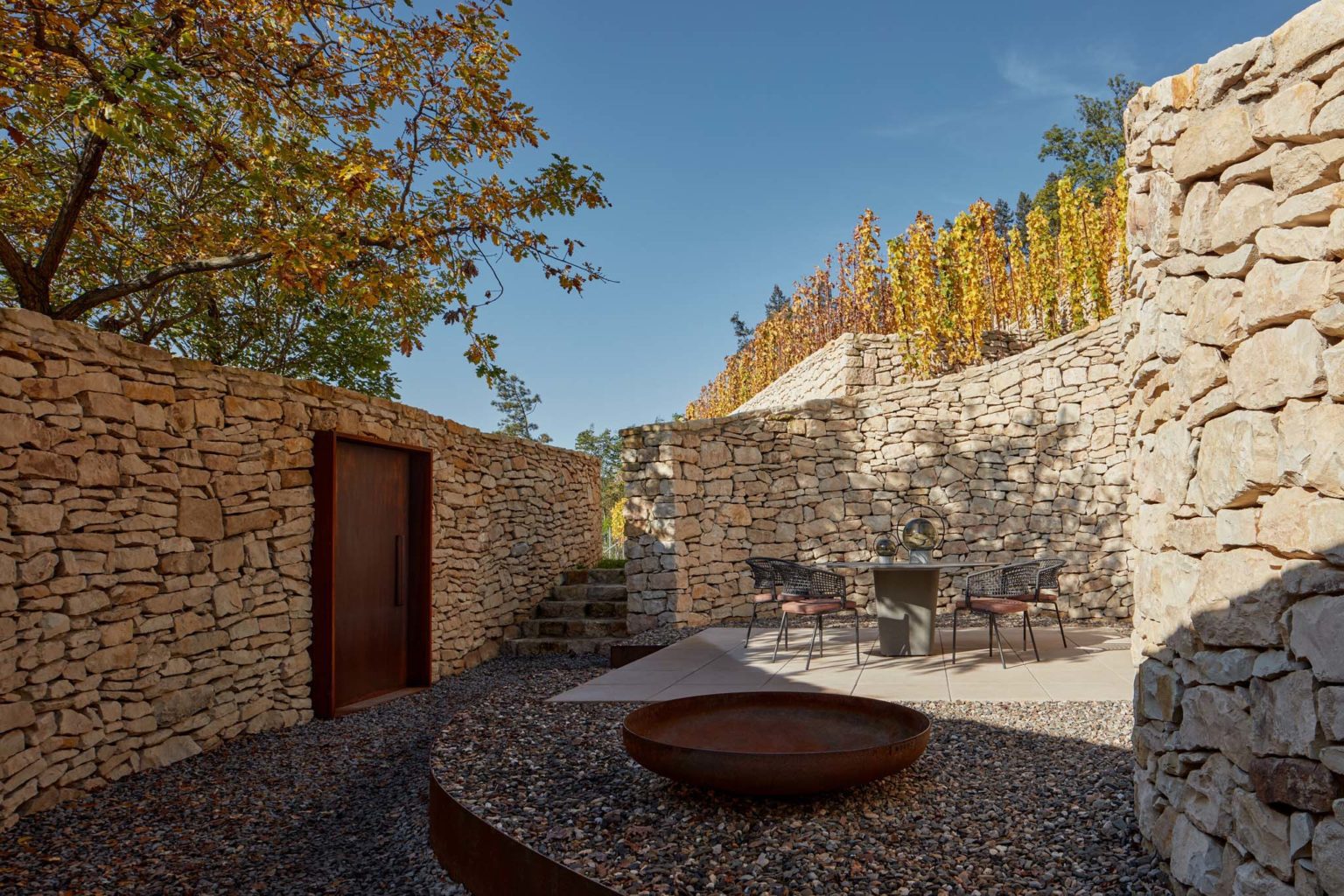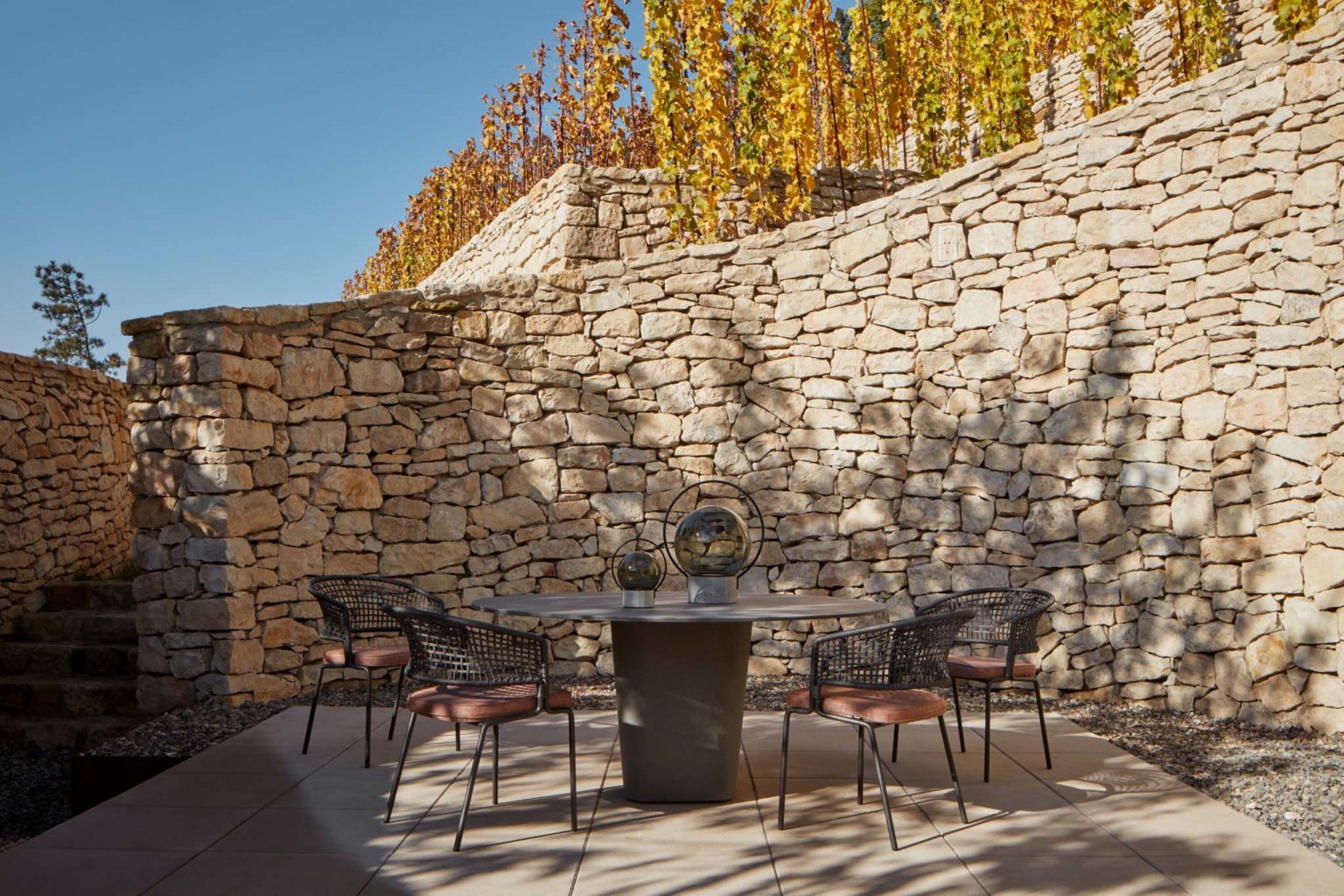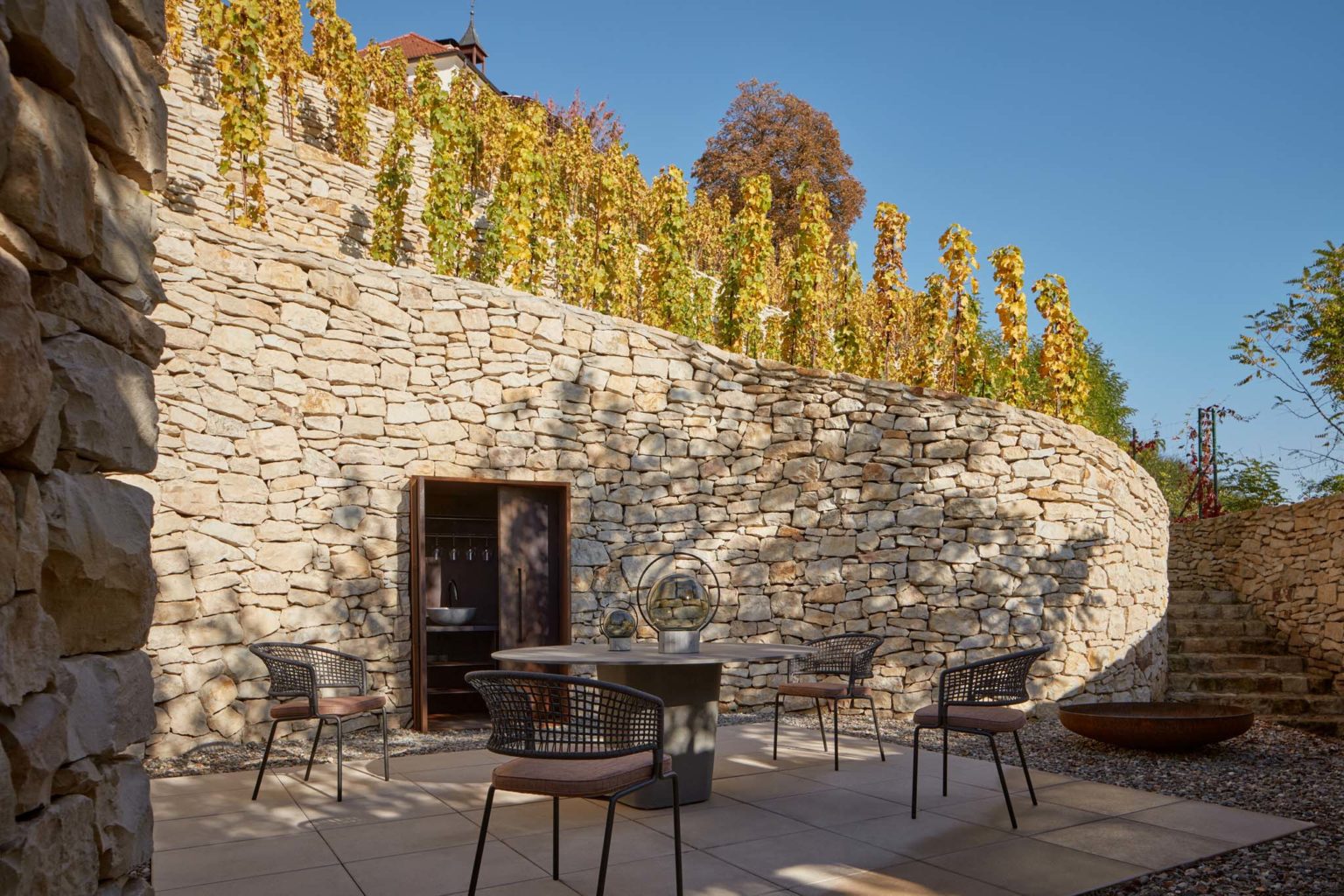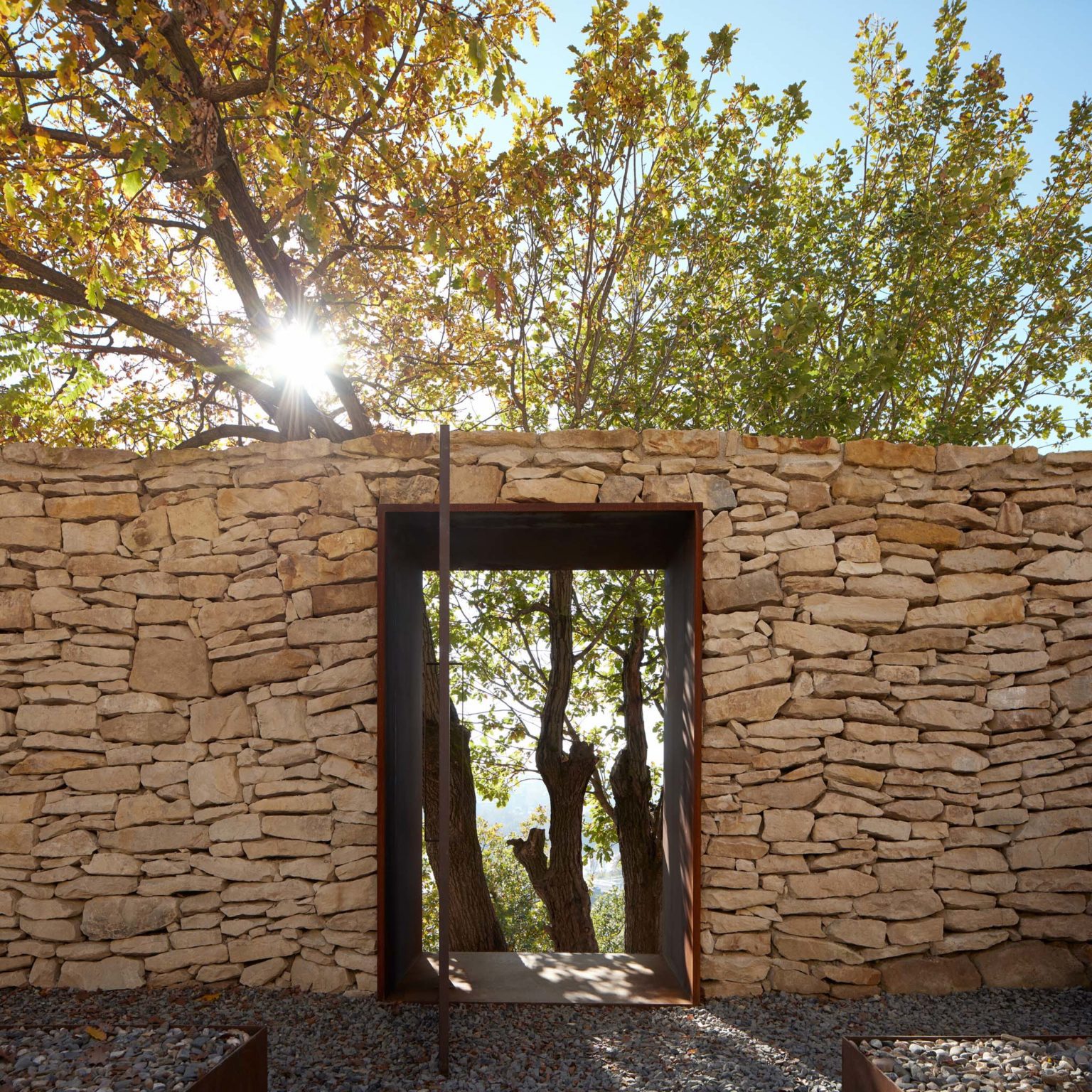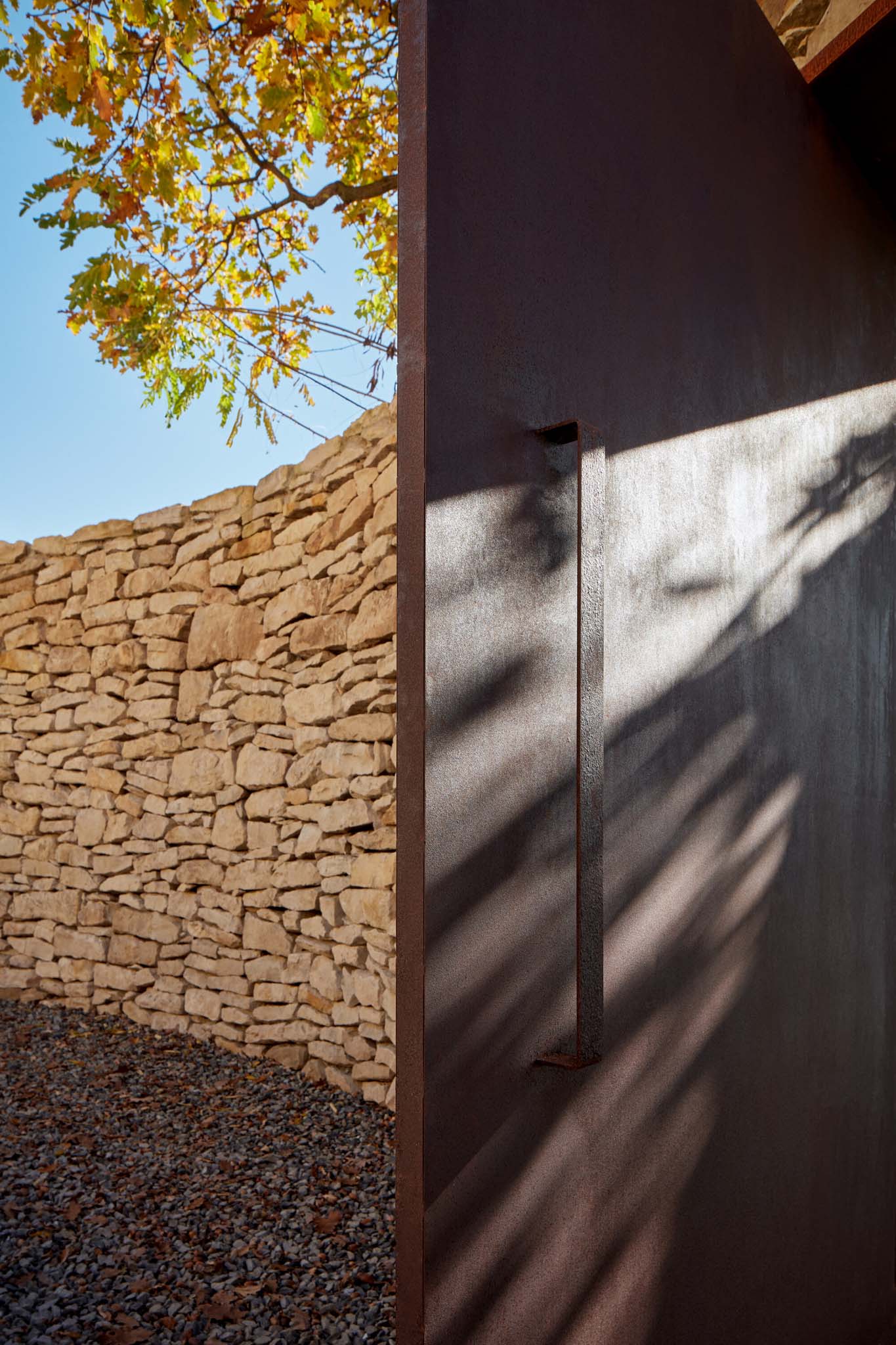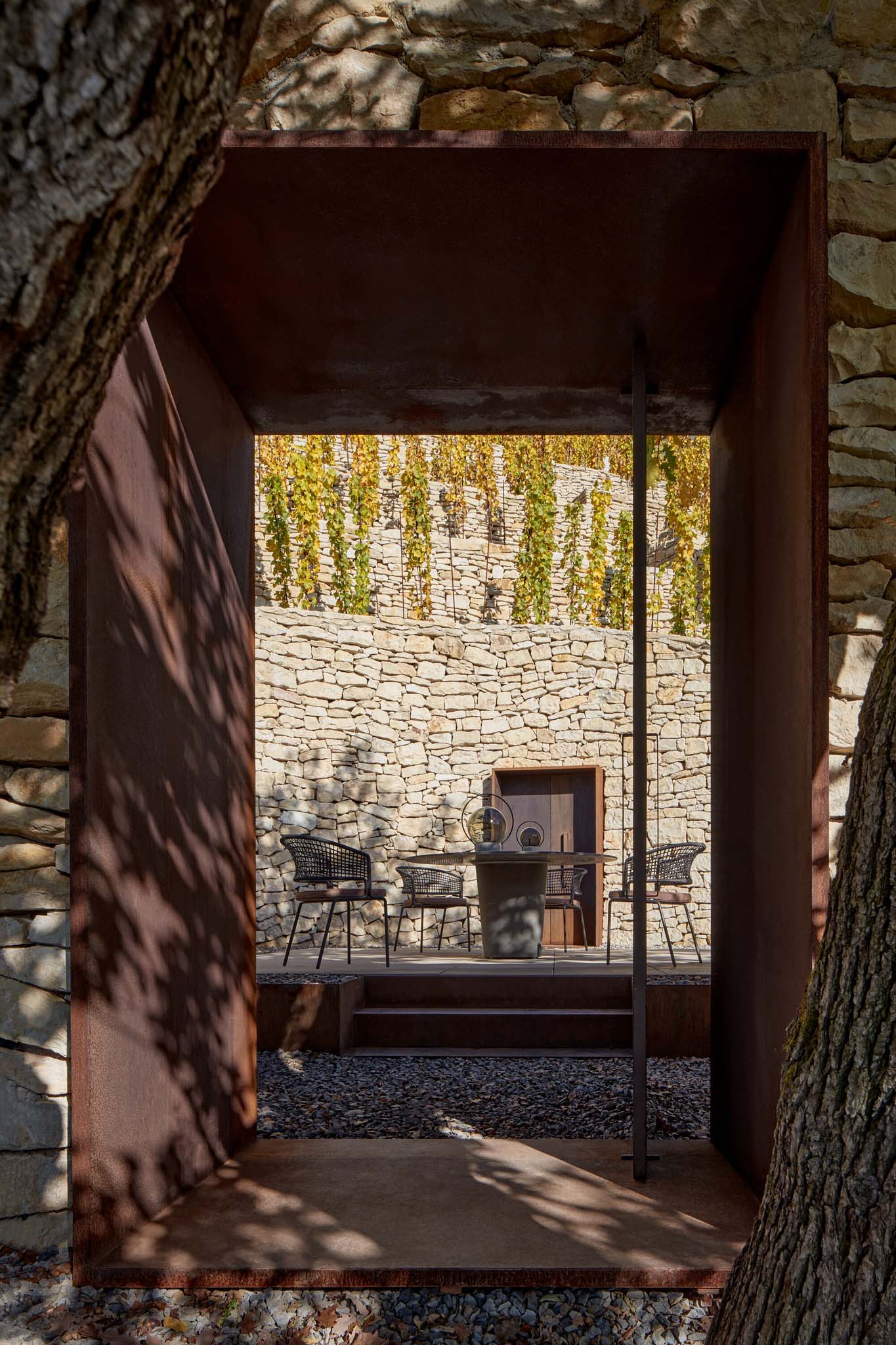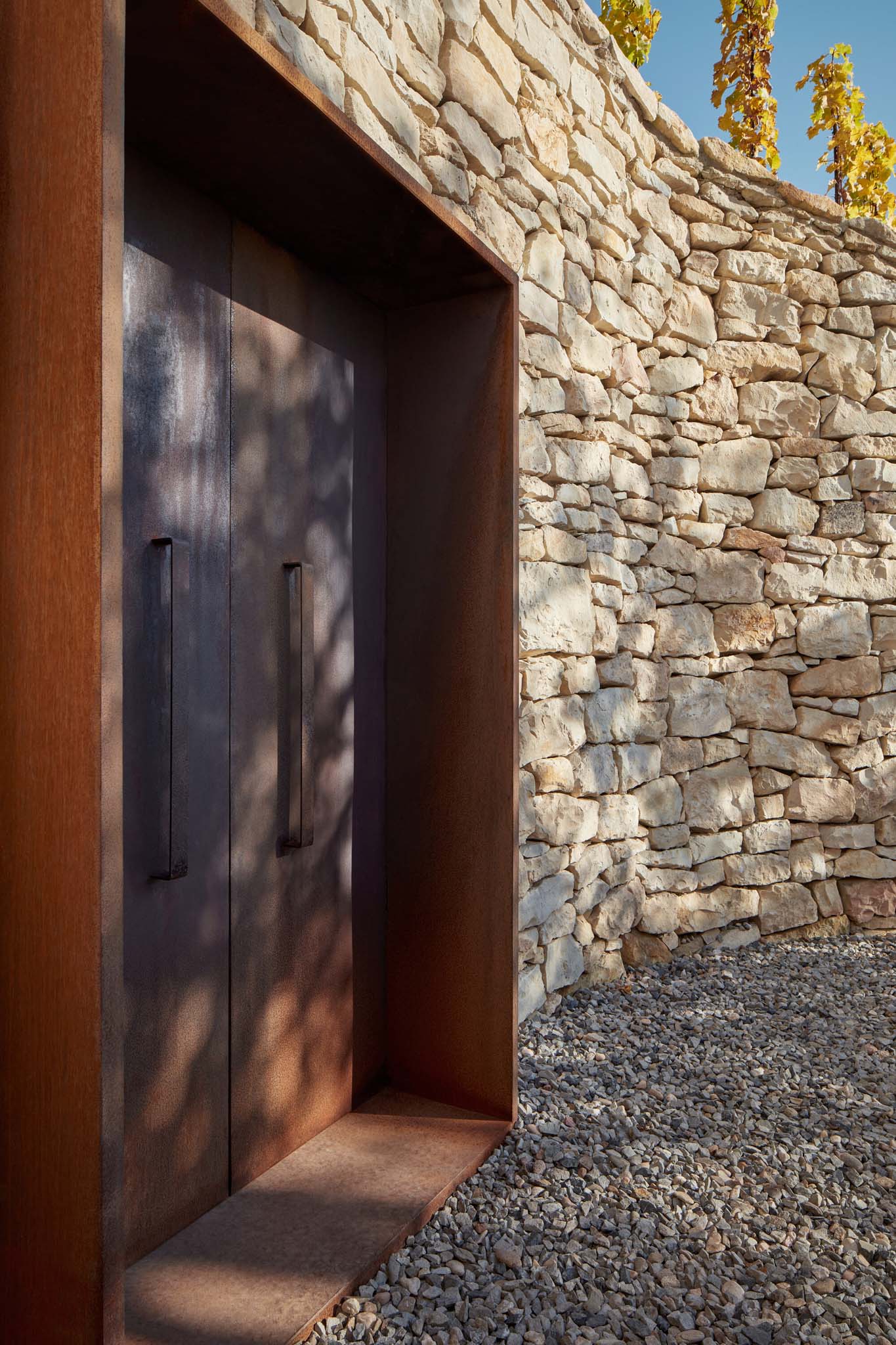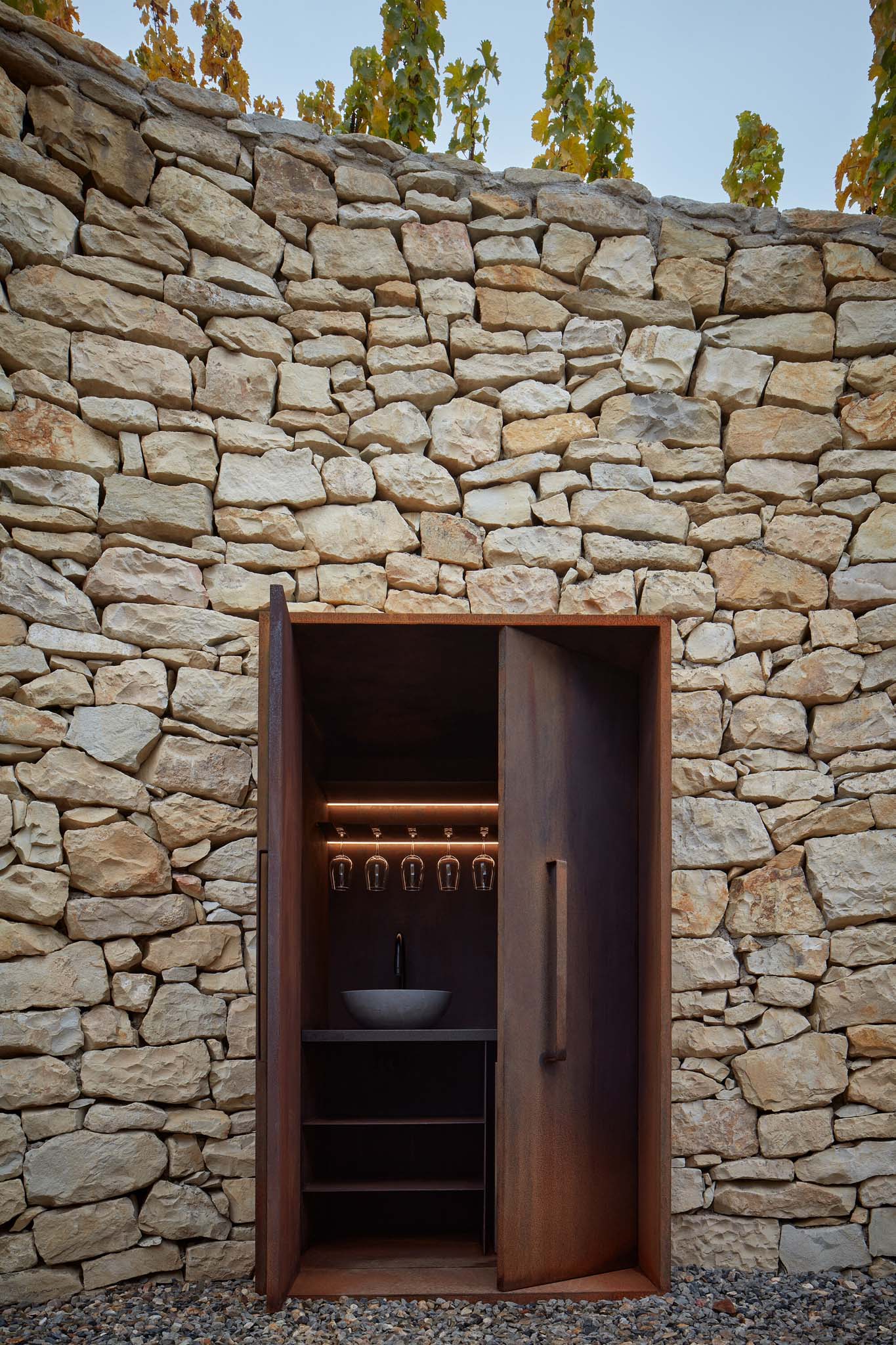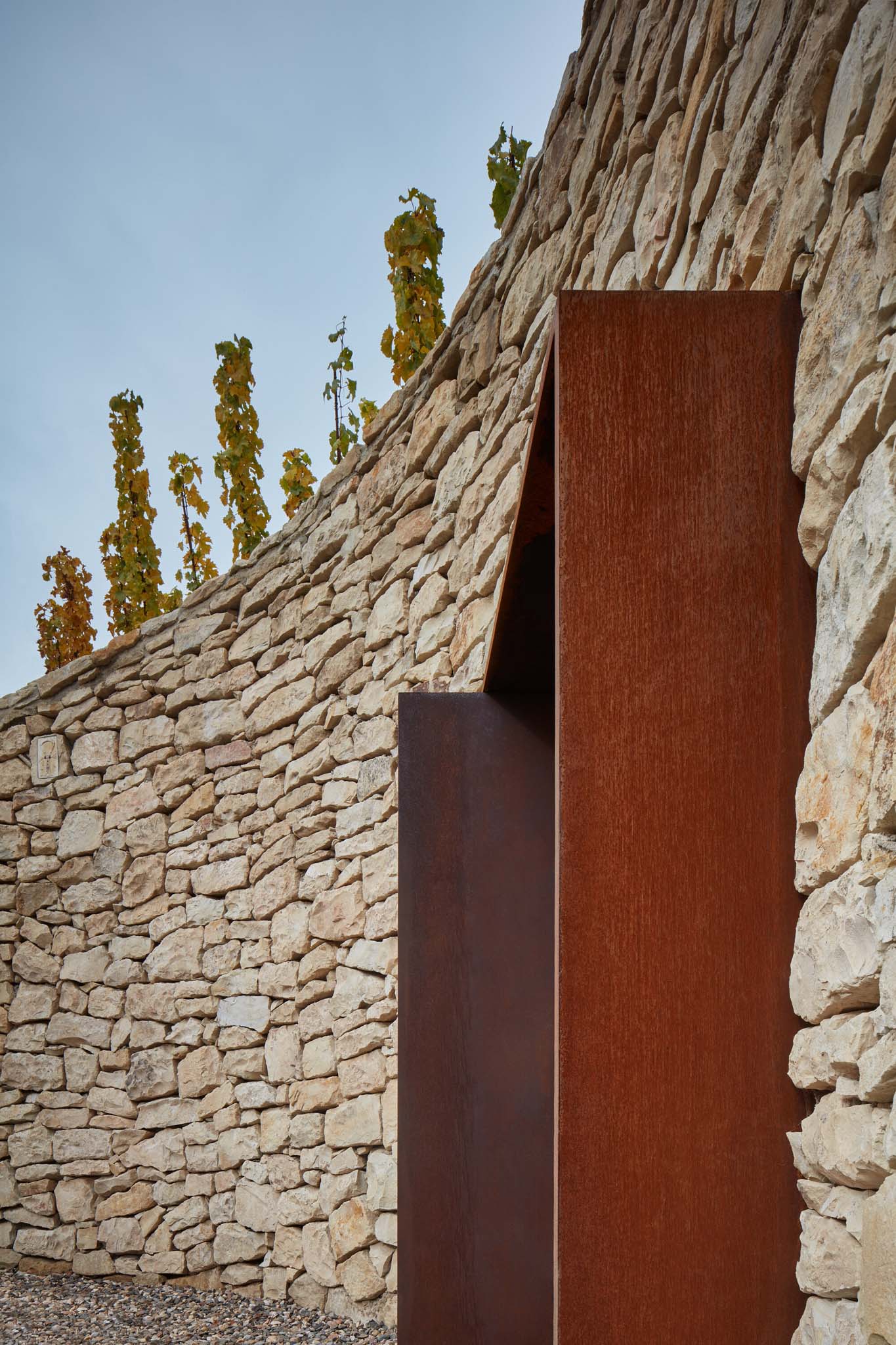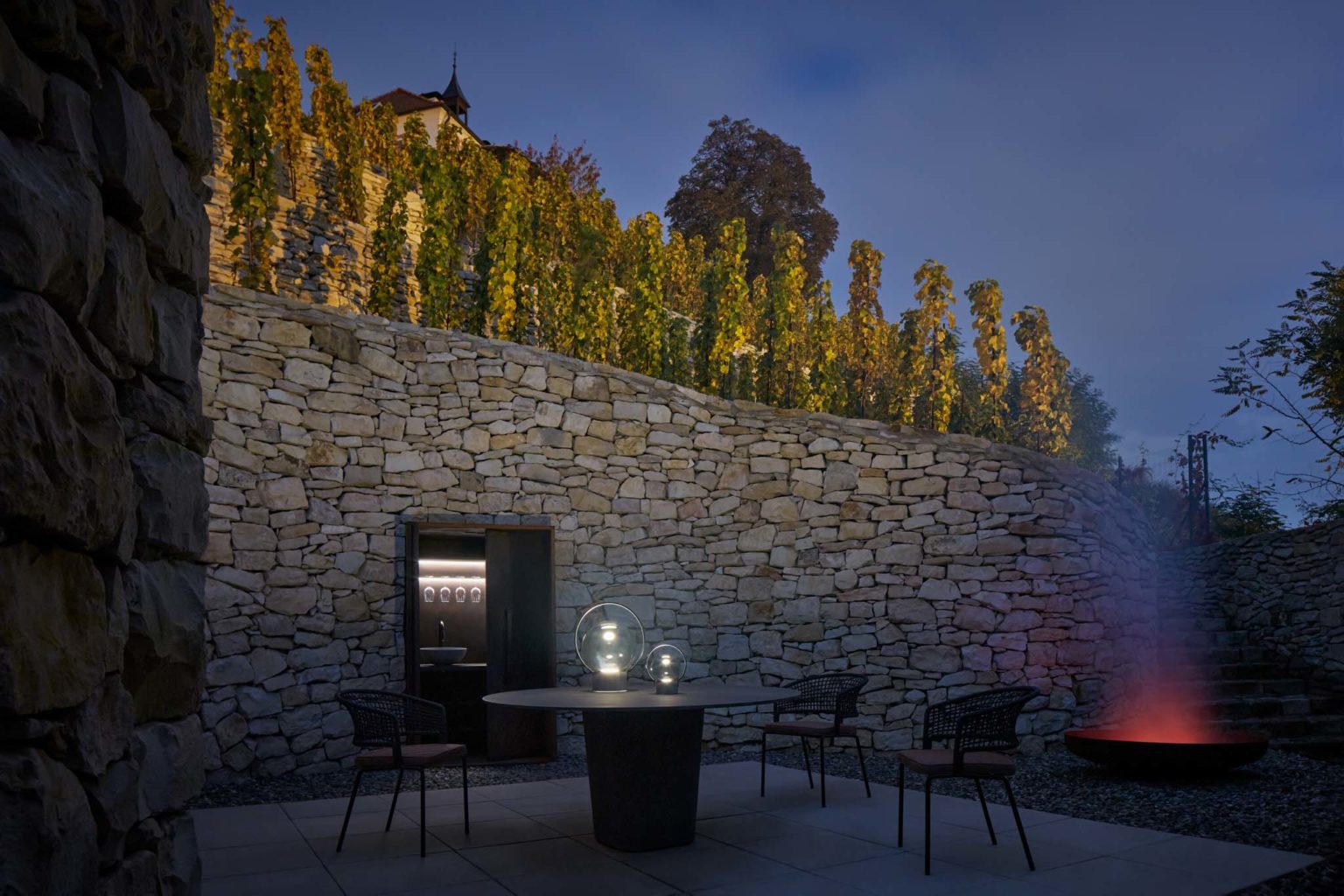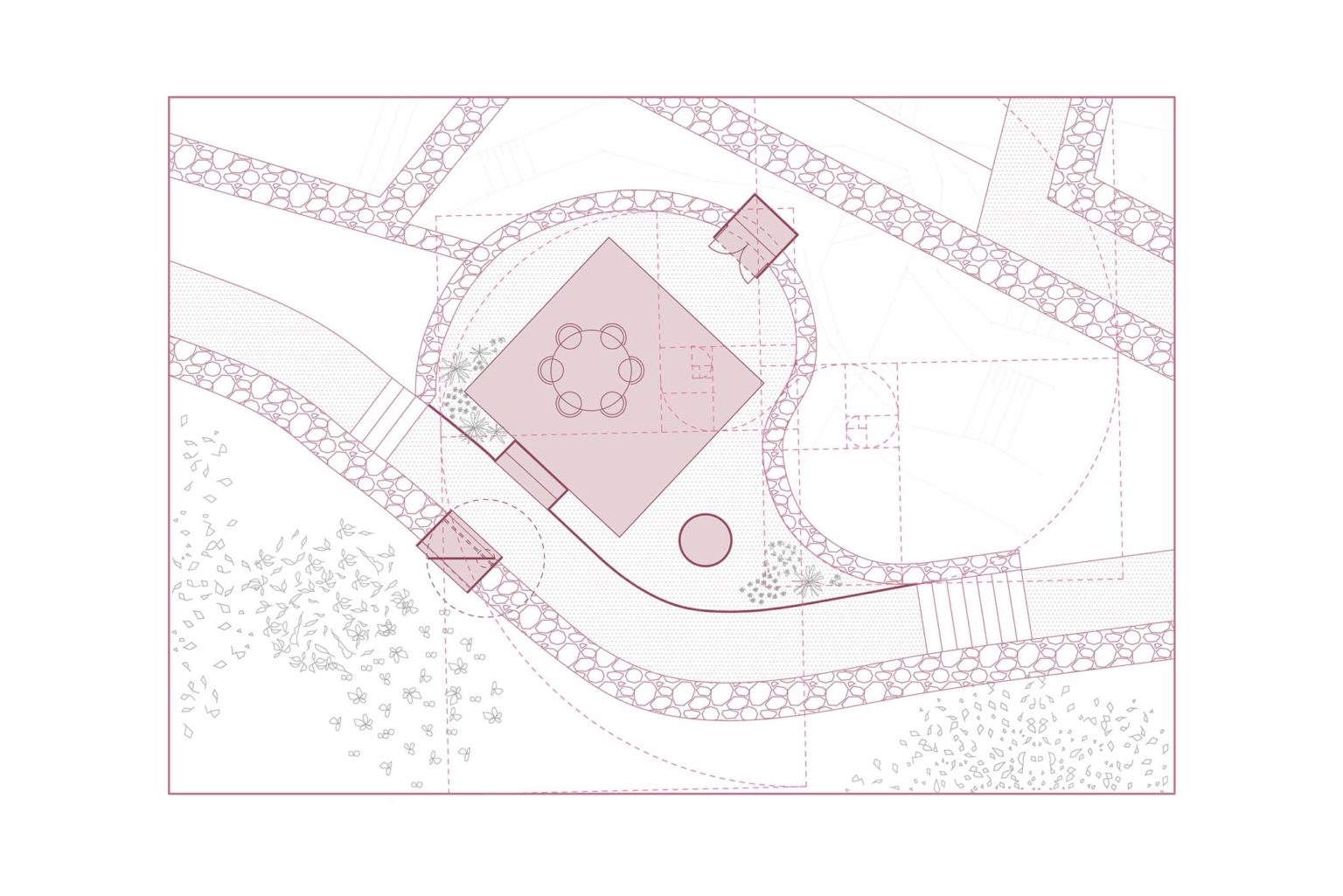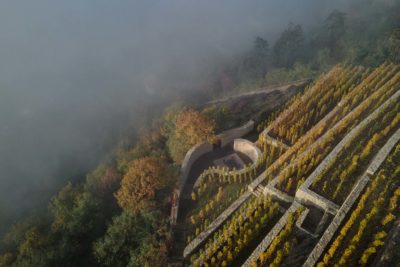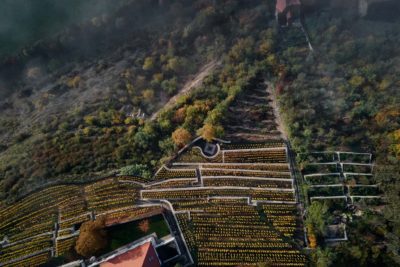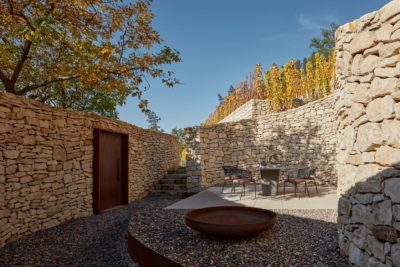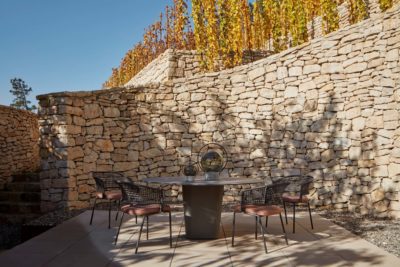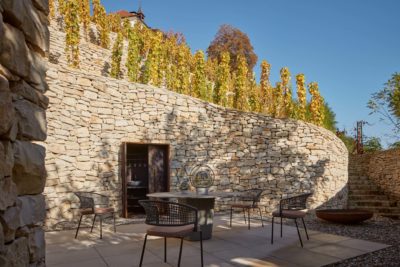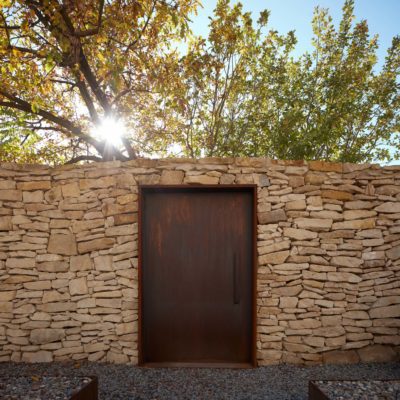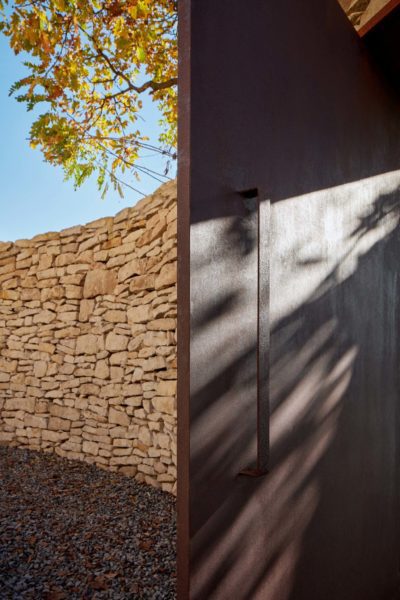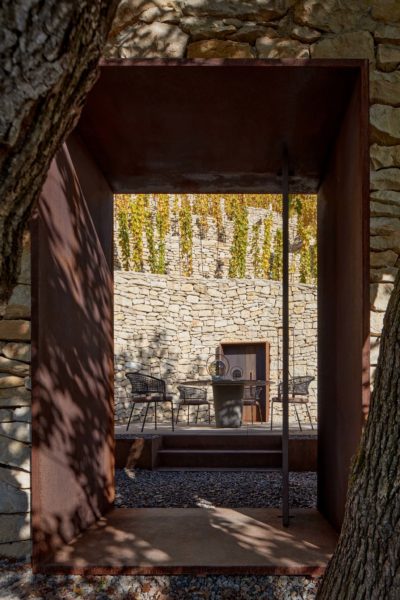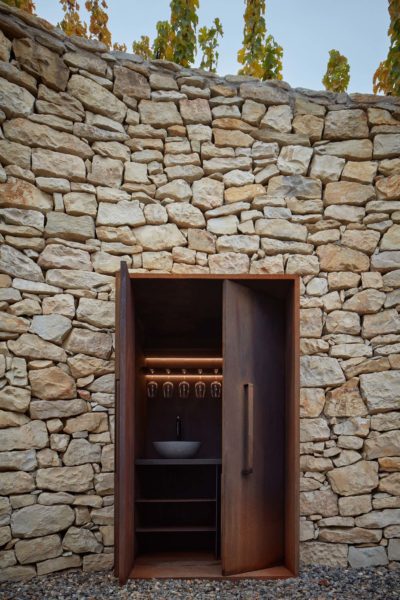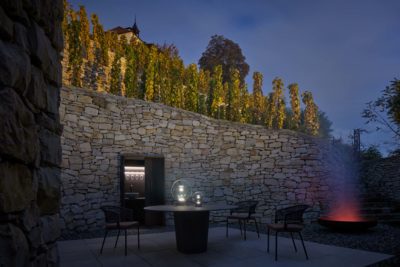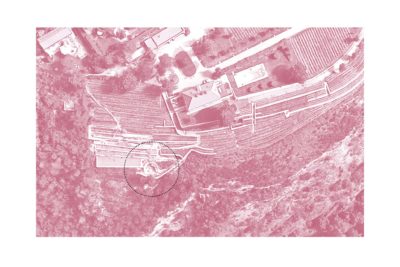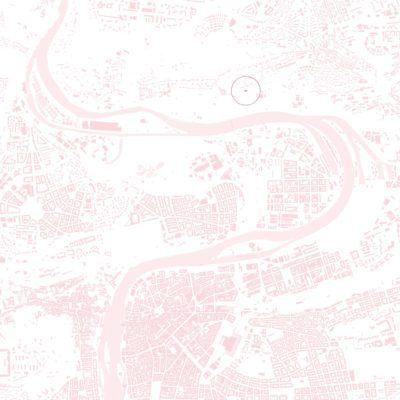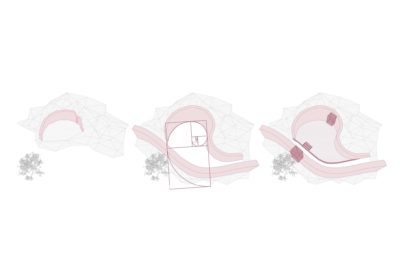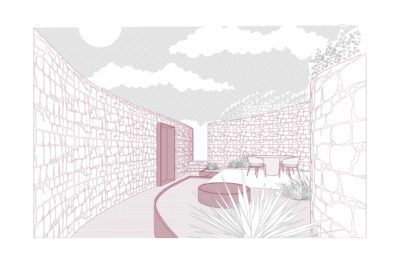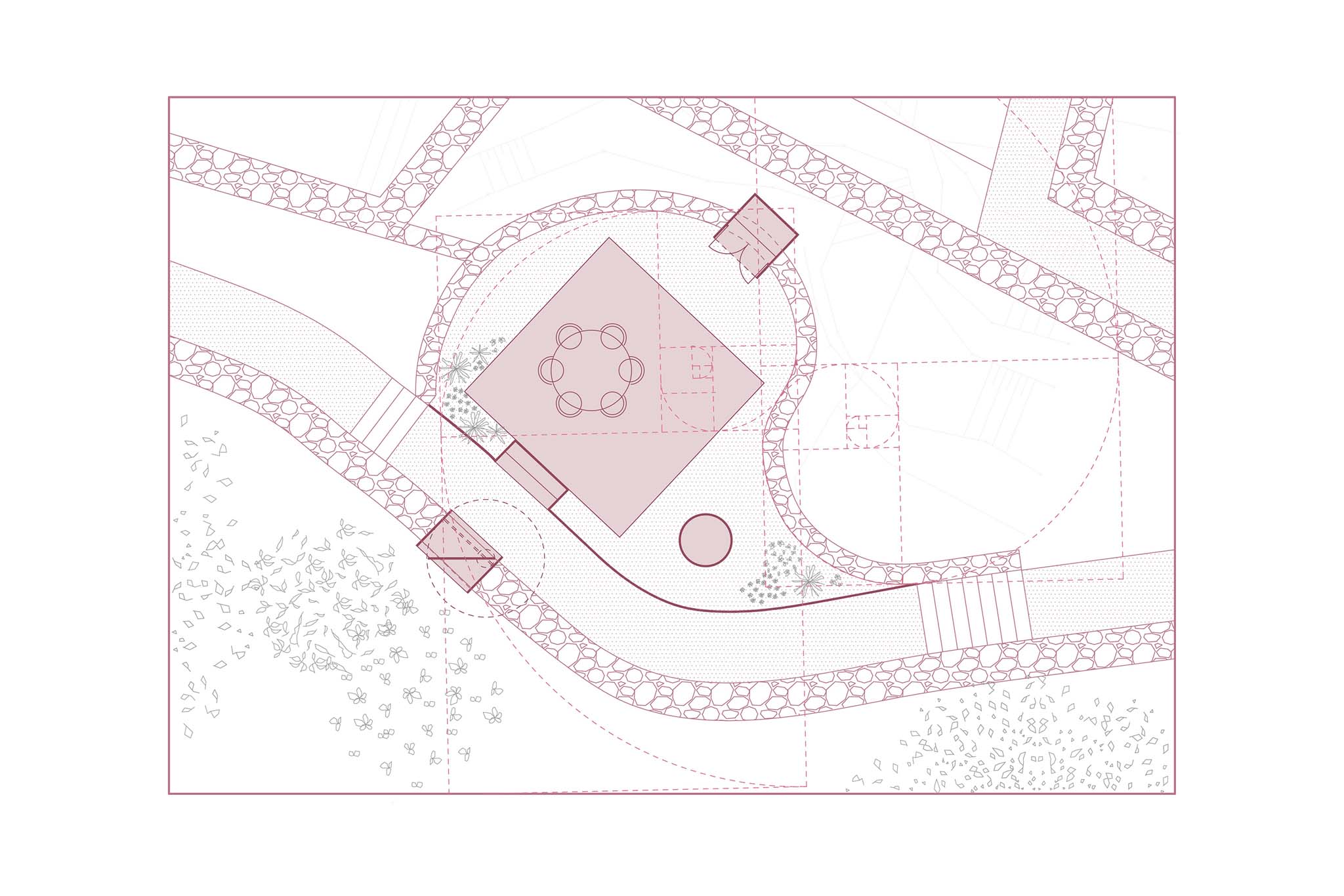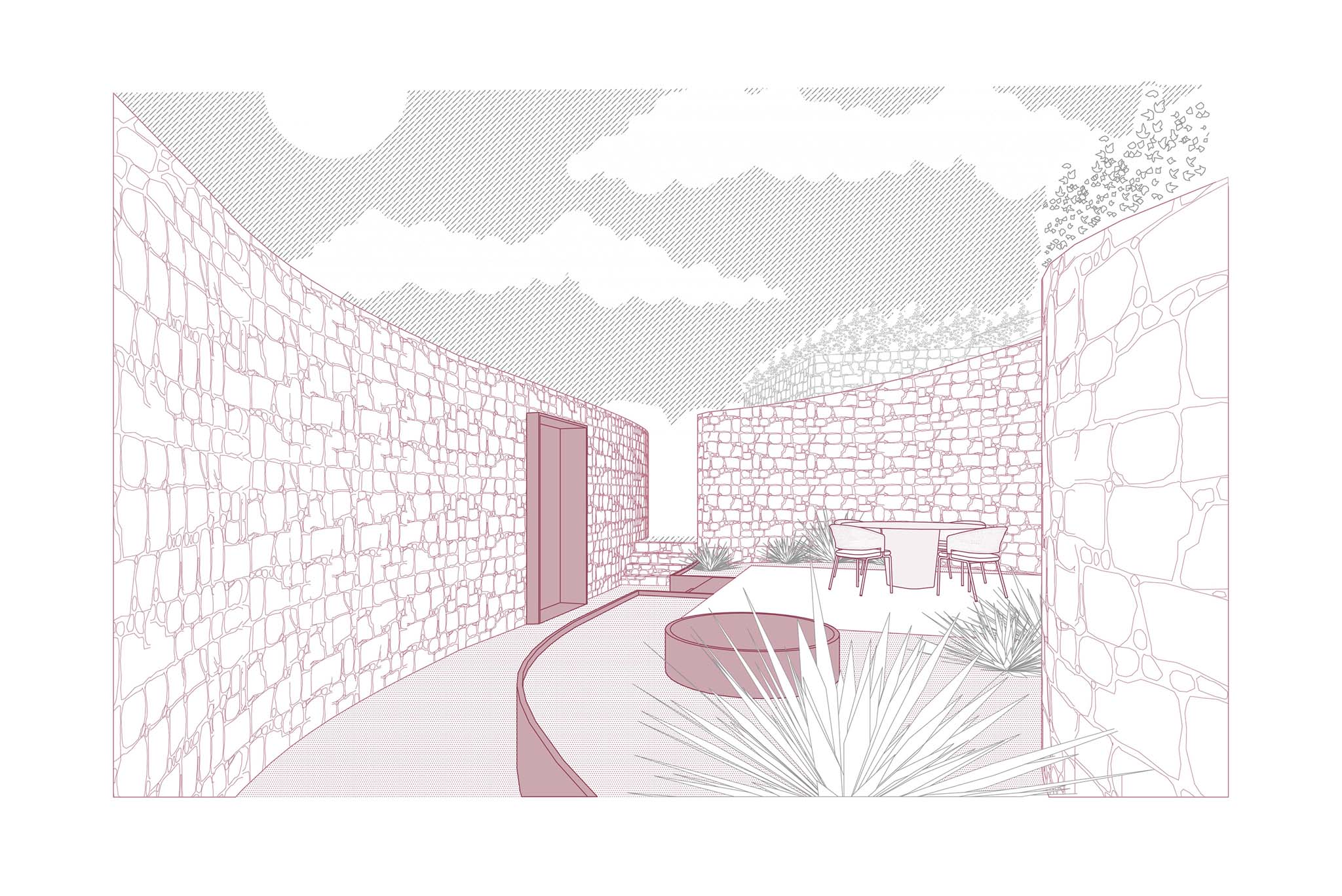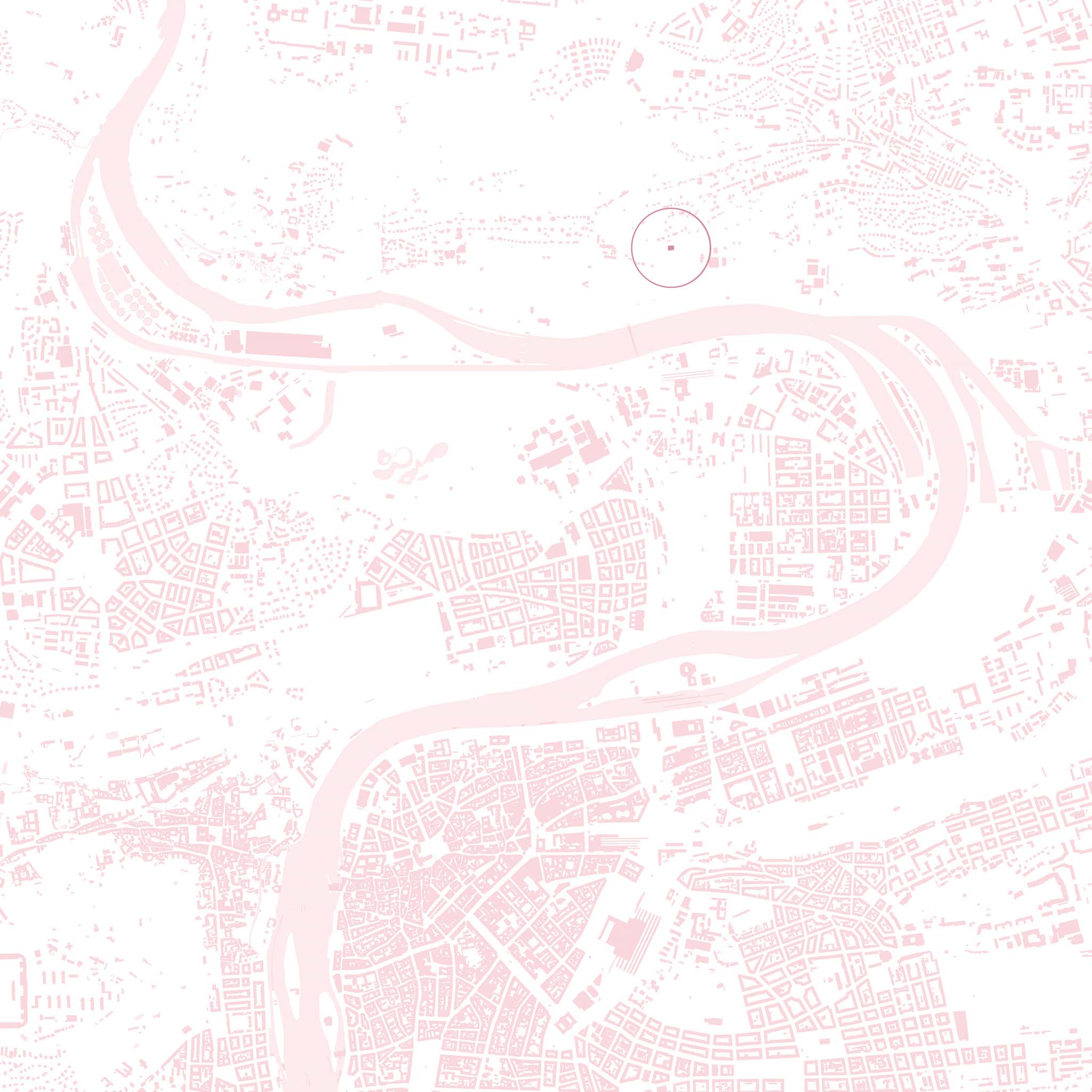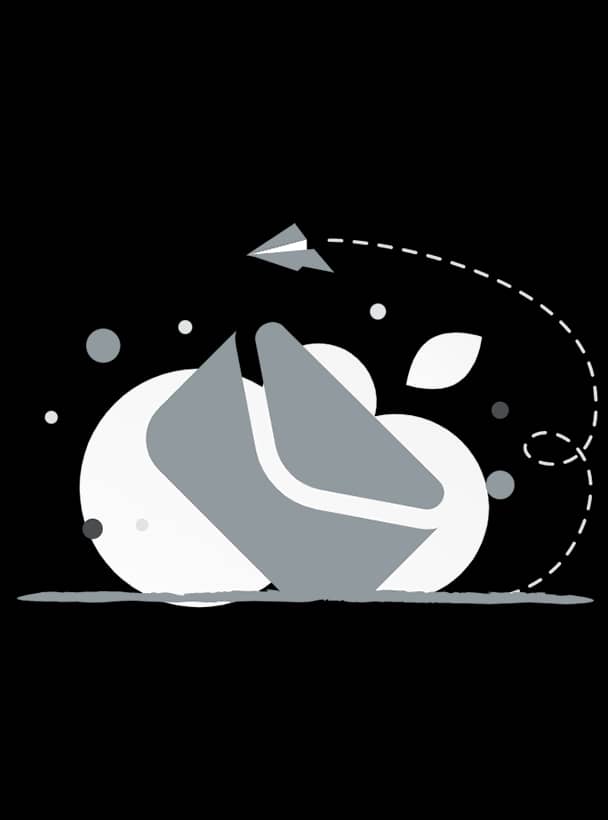Project Credits & Specs
- Architects: Marco Maio Architects
- Photographs: BoysPlayNice
- Location: Troja, Prague, Czech Republic
- Area: 100 m2
- Year: 2022

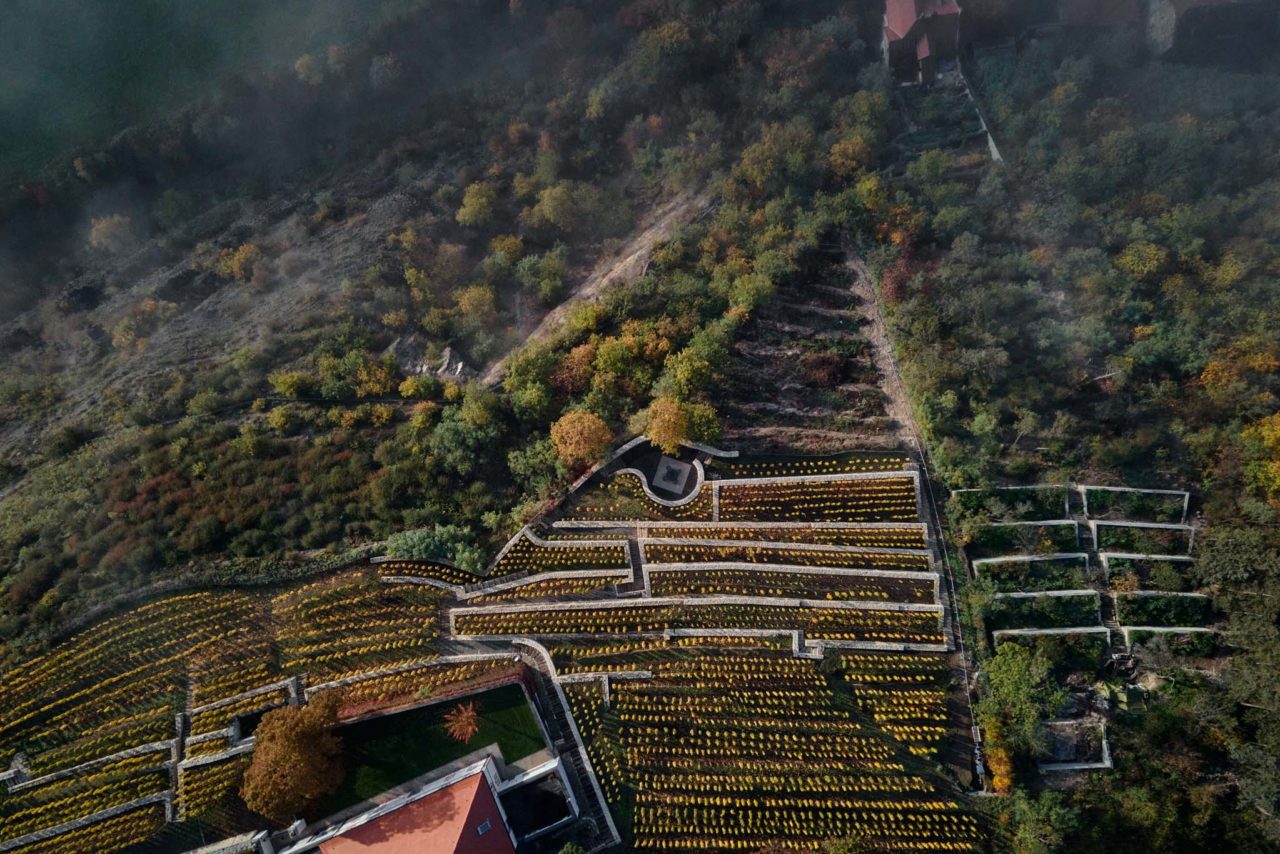
Project Description
On a rocky slope above the Vltava River, the classicist château Jabloňka stretches over Prague. Under the château, terraced vineyards with picturesque views of the metropolis form the dominant feature of the northern part of the city.

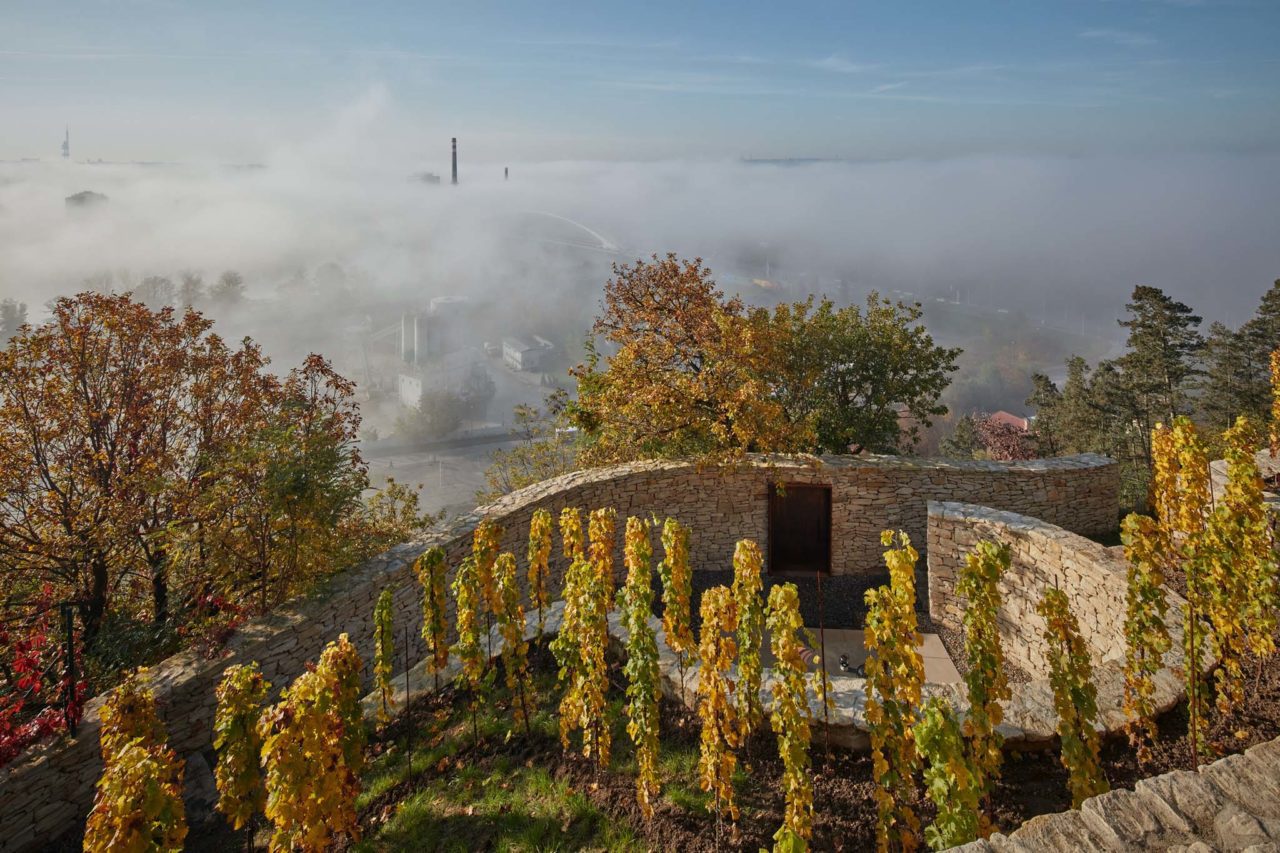
Prague was once called the “city of wine” when the Vltava river basin was still planted with long belts of vineyards in the golden ages of the reign of Charles IV. Černý Kopec Hill (nowadays Jabloňka) was no exception. After the influence of the Thirty Years’ War the Prague vineyards lay fallow and deserted. As a result, Černý Kopec was covered with apple trees, from which the name Jabloňka comes. In the 18th century, a château in classicist style was built on top of the Jabloňka hill, which offered spectacular views of the Vltava River. Classicism in its aesthetic attitude depended on principles based on Classical antiquity. Its emphasis on form, simplicity, proportion, and perfection awakened a romanticized memory of the Mediterranean cultures of ancient Greece and Rome.


During the centuries to come, the area under Jabloňka changed radically. In 1830 the Northern Railway was introduced, which led to a drastic expansion of the city. The once romantic views of vineyards disappeared and were slowly replaced by views of the growing metropolis. In the late 2000s, the area saw another radical modification – the construction of tunnel complex Blanka which ironically worsened traffic congestion, noise, and CO2 pollution in the Troja area.
Once romantic and beautiful château became in the middle of the noisy roads and rapid changes. At about the same time, Jabloňka became privately owned. Curious about its past, the owners decided to continue the historical legacy of the place and restored its vineyards on the adjacent land. In 2013 planted the first seedlings of the Jabloňka wine, offering only 3 varieties in limited editions, namely Ryýnský Ryzlink, Ryýnský Ryzlink Červený, Tramín Červený. While clearing the old garden, the stone terraces were discovered, which dictated the establishment of a wine-tasting patio.


Guided by history the goal was to bring back the romantic antiquity of the vineyard gardens. Driven by their southern European roots, the architects proposed the creation of an idyllic patio, which would allow its users to lose their relationship with the bohemian capital city.
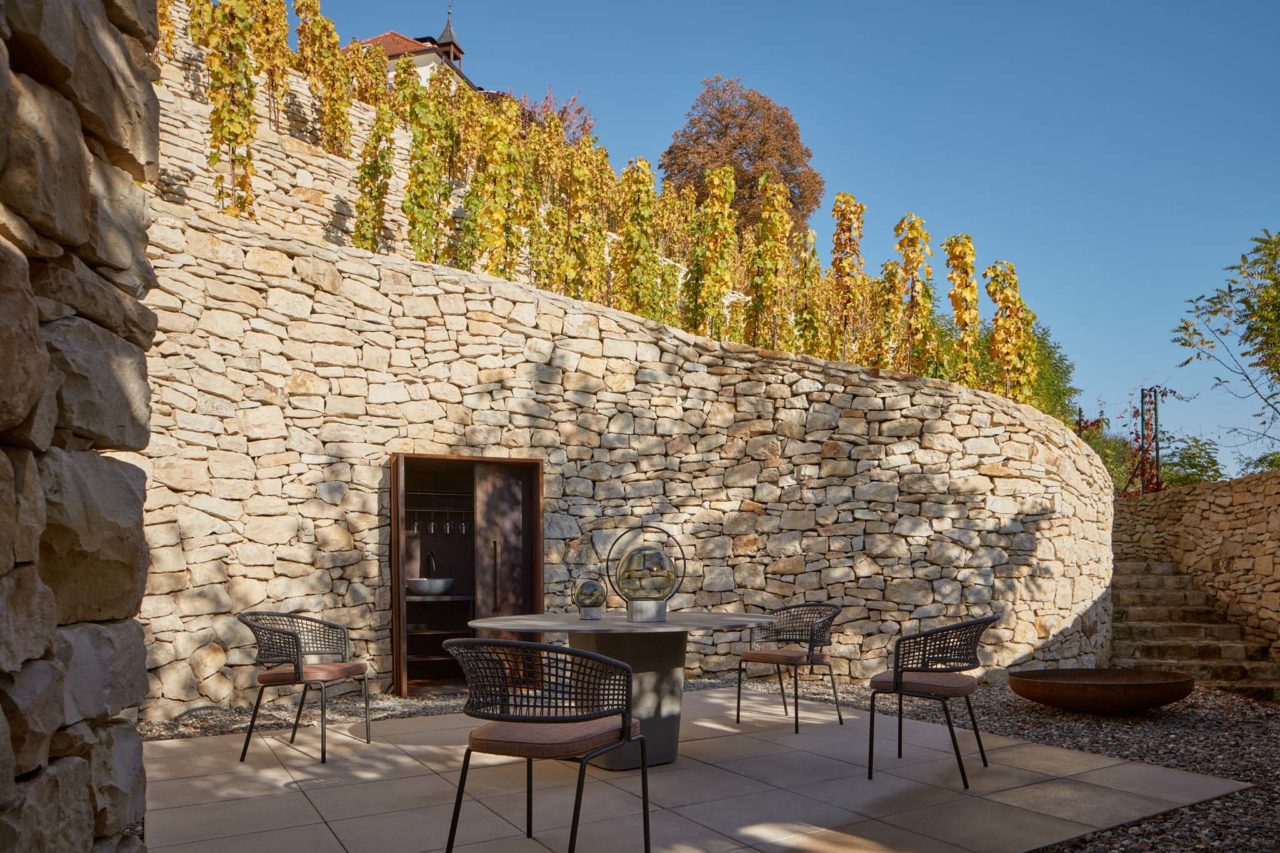
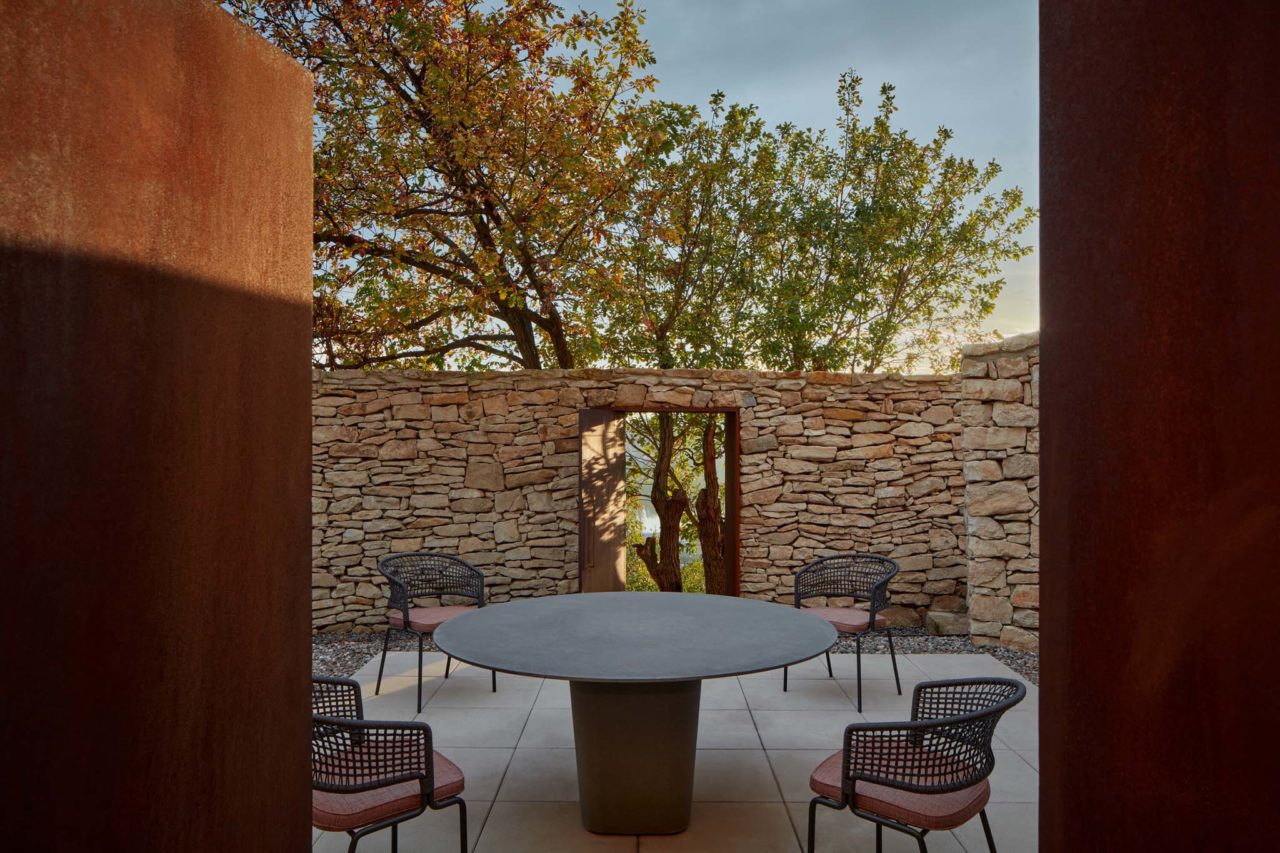
Forgotten in the terraced vineyard, a stone ruin with a curved space was discovered. Since the ruin was subtly integrated with the landscape, it became the basis of the intervention. The genius loci suggested the Fibonacci Spiral movement which was perfectly aligned with the existing ruin. By enhancing the walls of the spiral, a unique oasis of silence was outlined, as an answer to the problems of noise pollution. A simple space close to the city creates an ambiance that directs its users’ focus back to the château and the slope of the rows of vineyards.
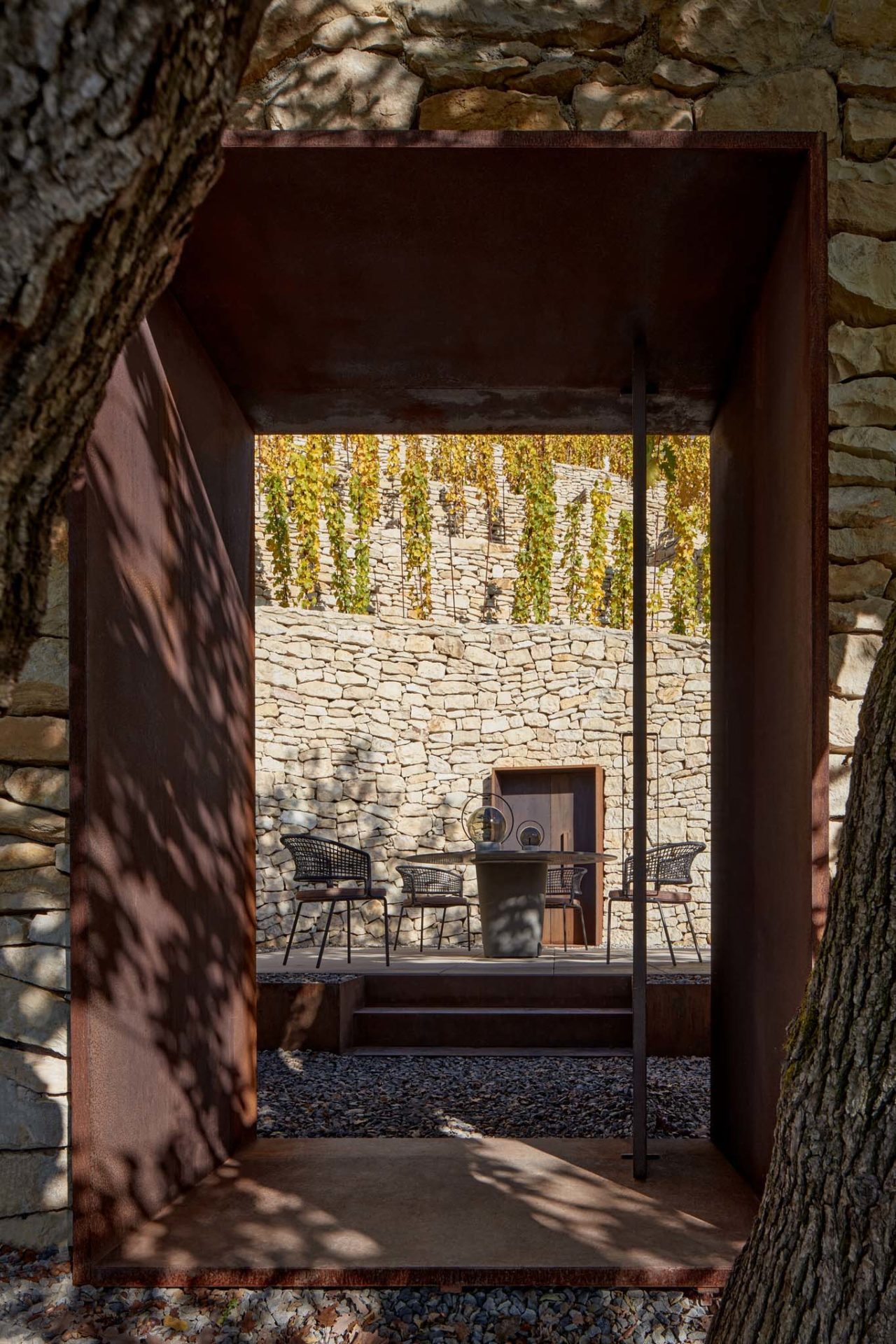



The overall intervention was driven by discovering and preserving the existing elements found on site. By framing one of them – an old oak tree with a door, a dominant feature of symbolism was established. While the doors are closed, his attention stays focused on the vineyards without the preeminent view of the city. On the other hand, by opening the window, the relationship with the city is established and induces the future expansion of the vineyard. Another corten door was created by mirroring the door feature on its axis. The latter niche serves as a small wine cellar, opening for storing and serving the wine.
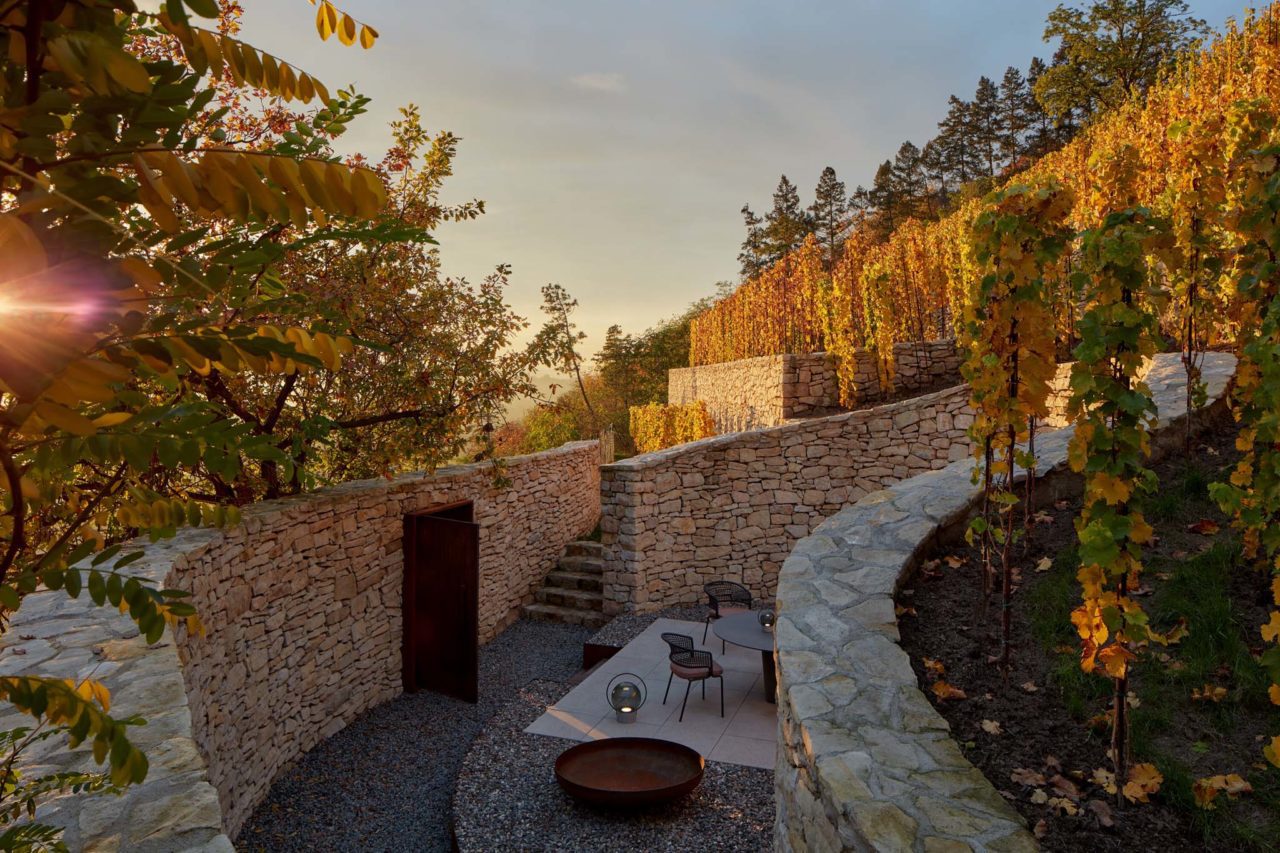

The Fibonacci patio is surrounded by indirect lighting facing the new stone walls, additionally has split into two different functional levels, the lower one intended for necessary connections and the higher one as the wine-tasting area centralized by a rounded table, which serves as the central space of gathering and socialization.


Materials
Stone – walls, stairs
Corten steel – doors, niche – small wine cellar, fireplace, stairs, the partition wall between platforms
Concrete pavers – a platform for wine tasting
Gravel – floors, walking paths
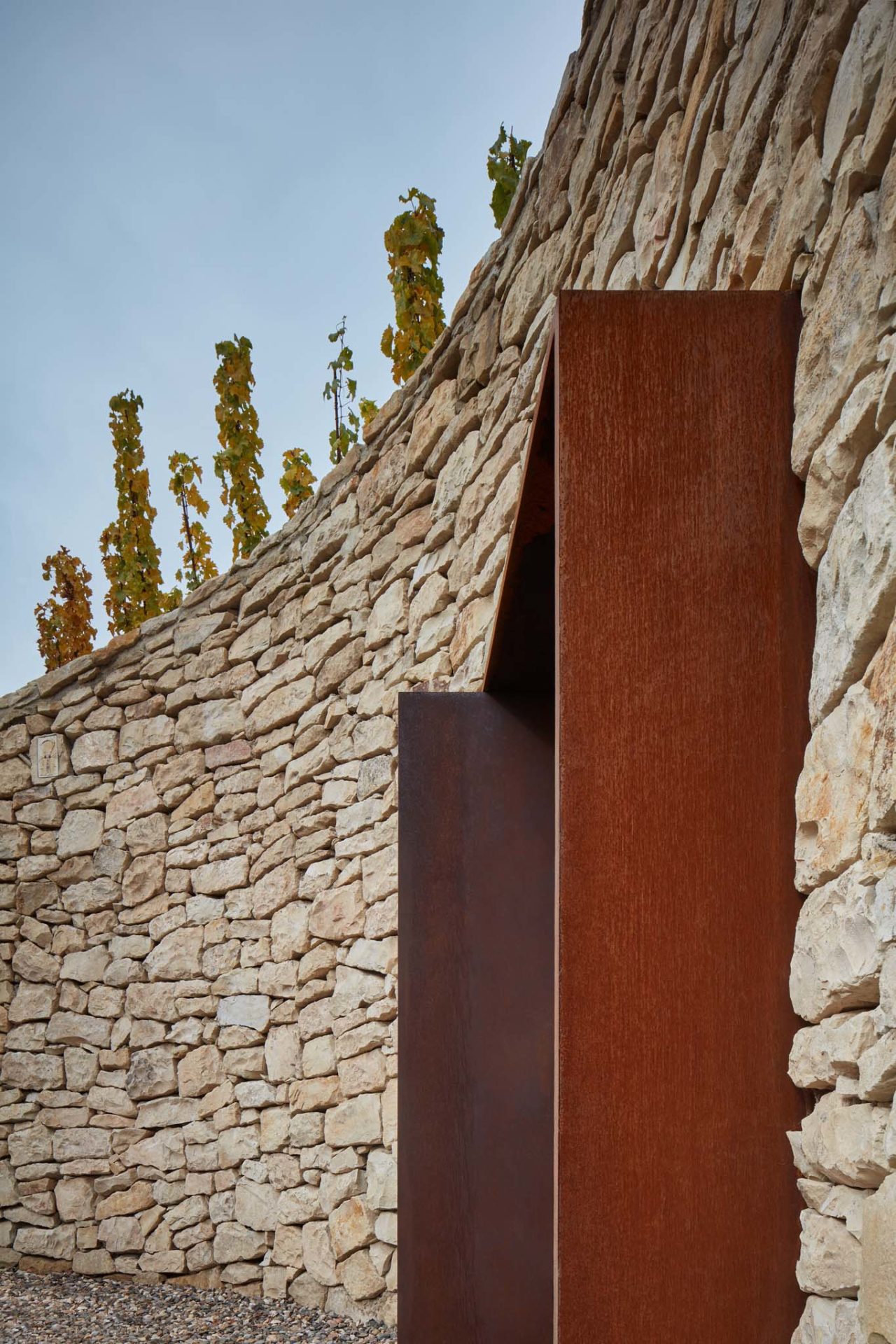
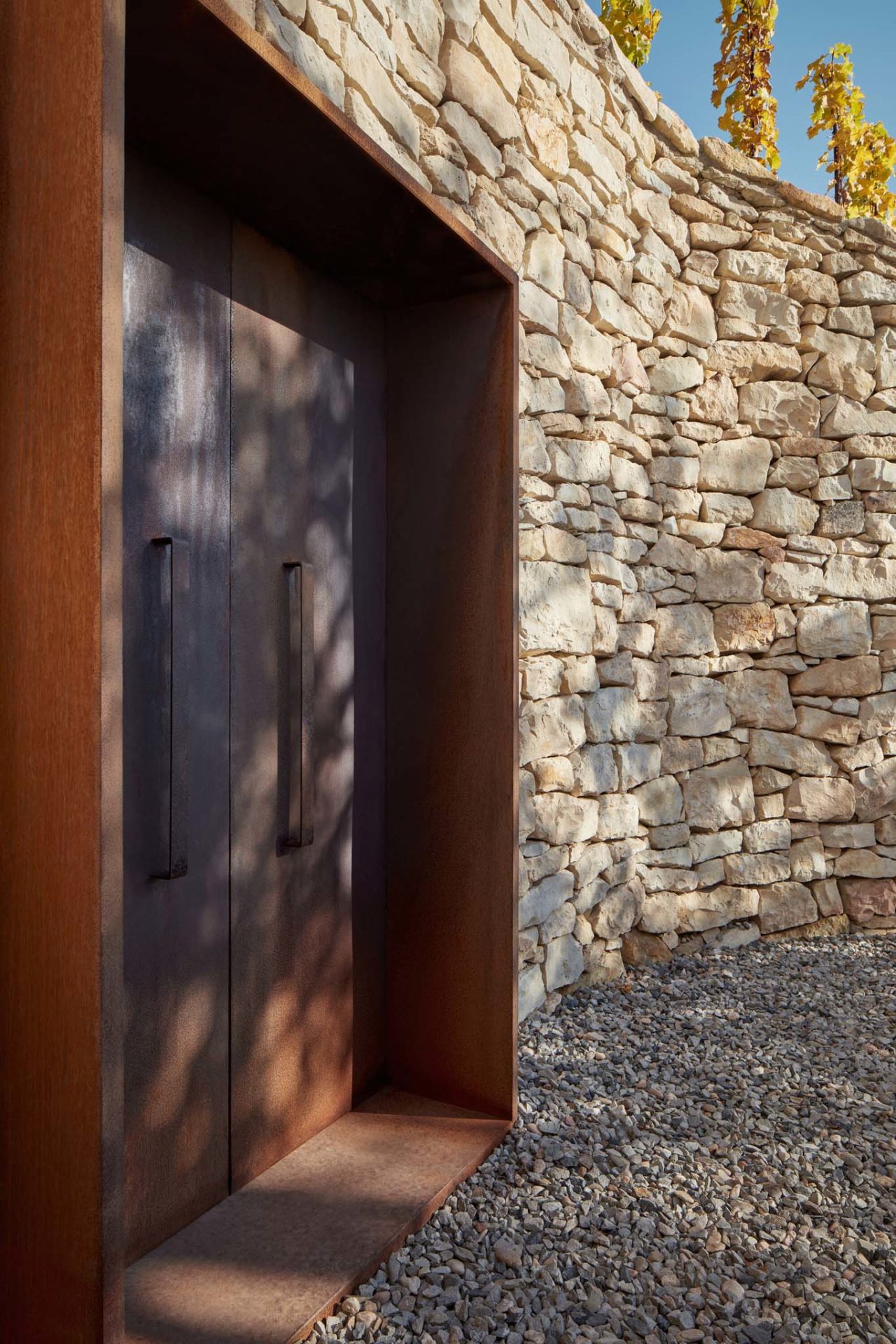


The project description is provided by the architects, via Linka.
About the Architects

Marco Maio Architects is a team of young professionals from around the world based in Prague. We use our background differences to shape new and interesting designs. Our work consists of a wide range of architectural projects, from small-scale designing of furniture to bigger projects engaging in urbanistic developments of residential and other areas. Our main design focal point is shaping the light. Meaning, we are emphasizing the natural light and creating a human-friendly environment to the best possible extent.



